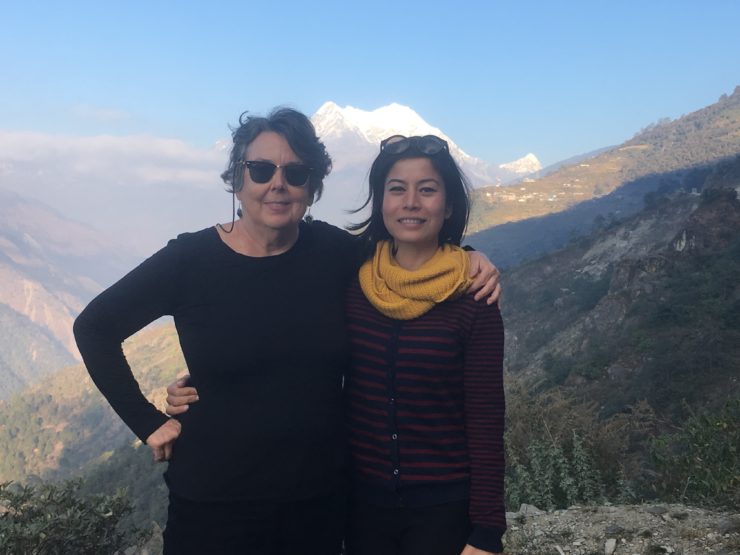
Lucinda Fleeson with Nepali Times reporter Shreejana Shrestha when they traveled to Nepal's northern district bordering Tibet to interview earthquake victims living in tents
The seven reporters rode motorbikes and jeeps into Nepal’s mountainous districts to find some of the 15,000-plus men, women, and children struggling through a second winter in emergency tents or corrugated-metal shacks. Back in Kathmandu, our data wranglers analyzed more than 6,000 pages of records to track rebuilding grants to earthquake victims.
Our goal was to document and explain delays in Nepal’s reconstruction efforts after a devastating earthquake in April 2015.
Now our multimedia project, “After the Quake: Waiting for Relief” is live on the Centre for Investigative Journalism-Nepal (CIJ-Nepal) website. It is a first in Nepal: seven young journalists from seven media outlets in Nepal collaborated on a deep data dive.
With the help of software wizards at the volunteer project Open Nepal, our data chief Arun Karki analyzed records of government reconstruction grants promised to 625,986 households. Using the results, he created an interactive map to show in granular detail the slow pace of funds to earthquake-stricken areas.
While the seven journalists collaborated on data, each reporter produced and published an individual story. A BBC radio reporter revealed that international charities promised to build 22,000 houses, but have completed only 900, primarily because slow-moving Nepali authorities have not released funds. Other reporters found that some residents in desperate need were left off grant lists because of frequent changes in government, or because landless villagers were so poor that they had built on government property.
A Republica reporter showed that a lack of manpower was delaying construction—even for those who had money and materials. Rudra Pangeni reported that a mere 150 masons trained in earthquake-resistant techniques were working in the hard-hit Sindhuli district—so few that the bricklayers would need 130 years to rebuild the district’s 34,256 demolished houses.
The project grew out of my desire to return to the former Himalayan kingdom after working there on three journalism-training programs. A Fulbright Specialist award provided the means to team up with CIJ-Nepal to coordinate the project. The Fund for Investigative Journalism, in Washington, D.C, provided funds for the reporters to take extra time to analyze data and travel to remote areas.
Our stories are only part of the earthquake reconstruction story that will dominate Nepali news for many years. But we hoped to demonstrate that complicated and time-consuming data analysis can be shared collaboratively by multiple news outlets to document the human cost of Nepal’s heartbreakingly slow recovery.



